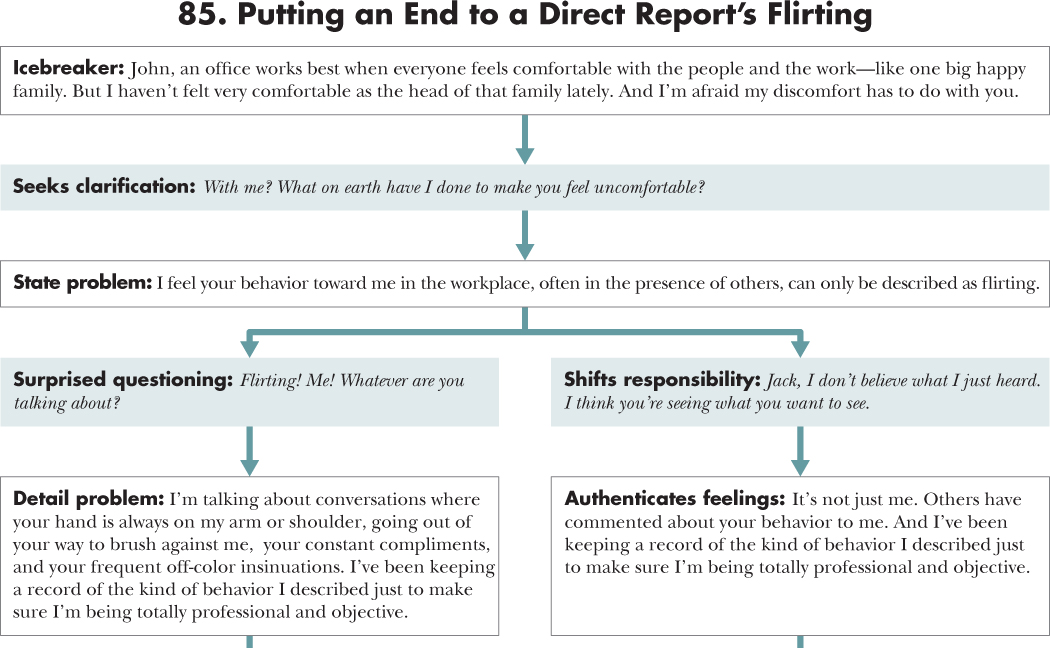85
Putting an End to a Direct Report's Flirting
STRATEGY
The overfriendly worker's “hands‐on” approach to work, coupled with the occasional double entendre, body brushing, and personal compliments, creates one of the most difficult and uncomfortable supervisor–direct report problems you'll face. Your success at ending this behavior will depend on your objective, dispassionate approach, citing examples of the behavior. Your focus should be on linking the perceived behavior to the manner in which you and other staff are adversely affected. Expect responses ranging from anger to embarrassed enlightenment. Don't be surprised at arguments accusing you of sexual harassment. Don't get rattled. Be objective, cite your documentation, and focus on your professional concern for maintaining an effective workplace. Ultimately, it's not important to get agreement: Recognition of your position and the reason for it should be enough to end the problem.
TACTICS
- Attitude: You need to be calm and controlled. You're a diplomat who must avoid personal entanglements while dealing with an issue that's clearly personal. Feeling flattered is a natural reaction. But you must maintain the objectivity of a manager who's simply dealing with another workplace problem.
- Preparation: Establish that a pattern of behavior is taking place. Keep a record of incidents to confirm not only the problem, but your objective approach to the problem. Include dates to give your notes even more credence. Use fellow managers as sounding boards. If they confirm your observations, so much the better. If they haven't really noticed, ask them to be more aware and give feedback on what they see. Their support is helpful but not absolutely necessary. Your perceptions are enough to initiate action.


- Timing: Don't rush into this. The more time to document your view, the better. This also gives you a chance to see if the behavior is directed at others as well. Initiate the dialogue at the end of the day, on Friday if possible. This will avoid any co‐opting of fellow‐worker sympathy or anger. It will also offer time for cooling off and reflection.
- Behavior: Be the objective manager throughout. Remain at your desk to underline the supervisor–direct report relationship. Present your case in a straightforward, matter‐of‐fact manner. Stay away from comments that could move the conversation onto a personal track. You're dealing with your perceptions, and those perceptions cannot be argued with. You even have documentation of the behavior that shaped the perceptions.
ADAPTATIONS
This script can be modified to:
- Deal with the office flatterer or the favor‐seeker who provides freebies and all types of small gifts.
KEY POINTS
- Determine that the behavior perceived is part of an ongoing pattern.
- Document examples of the behavior to authenticate your perceptions.
- Maintain a tone of professional concern and control at all times.
- Be consciously aware of not responding on a personal level to counter‐arguments.
- Meet at the end of the day, and, if possible, on a Friday.
- Be clear about what you'll do if the behavior doesn't change.
